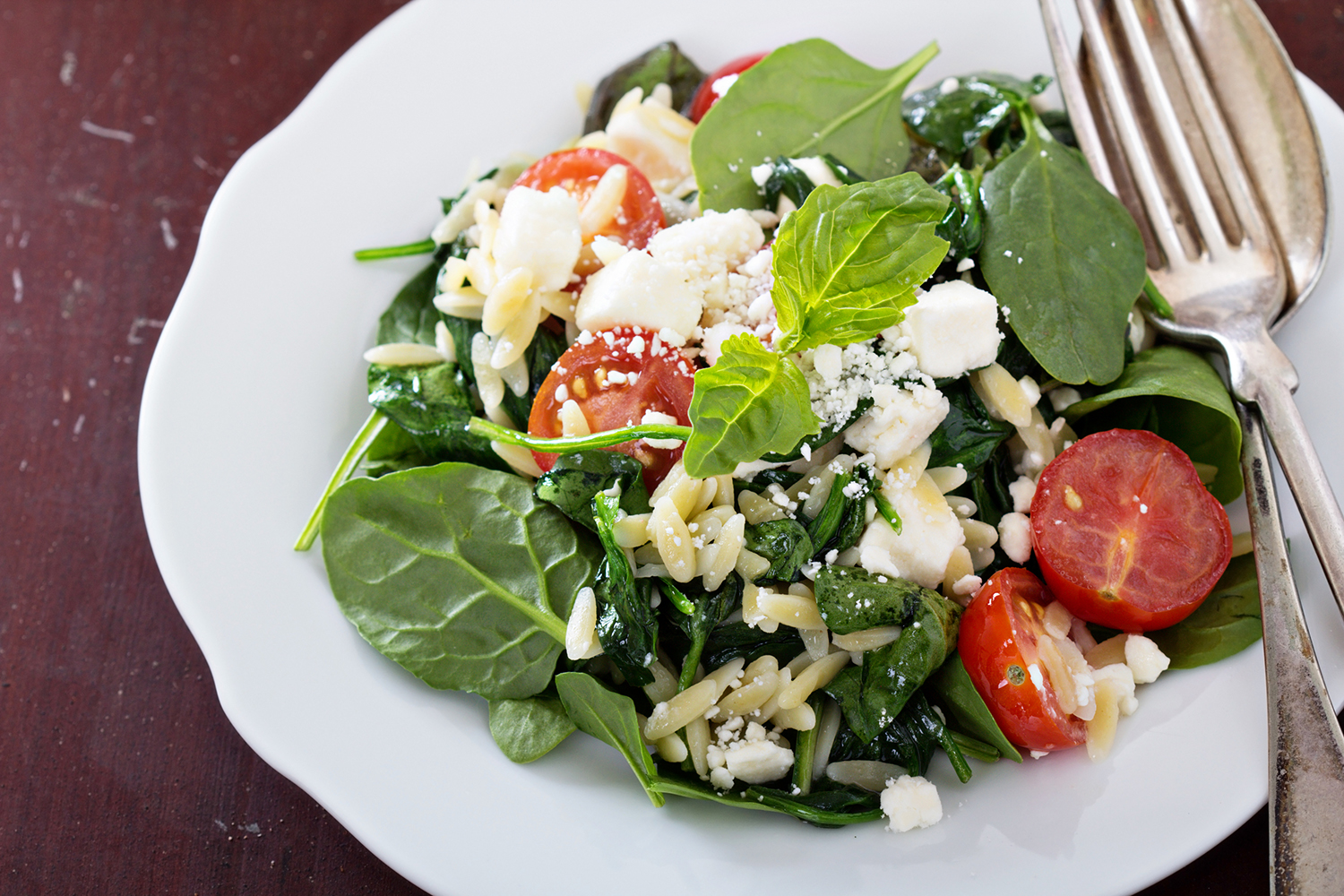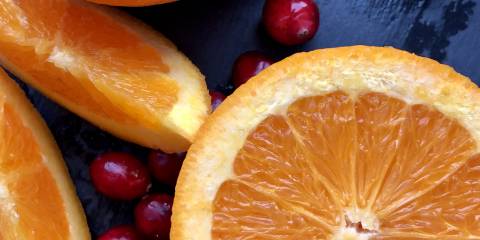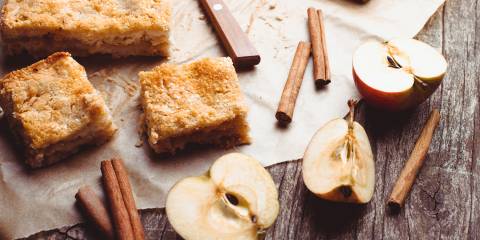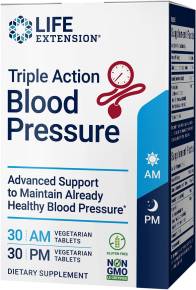Spinach Salad with Vegan Feta and Garlic-Balsamic Vinaigrette
By The Taste for Life Test Kitchen

Prep Time
20 minutes
Number of Servings
Serves 4
Ingredients
-
Garlic-Balsamic Vinaigrette
- 3 garlic cloves, minced
- 1⁄4 cup balsamic vinegar
- 1 Tbsp red wine vinegar
- 2 tsp agave nectar
- 2 tsp Dijon mustard
- 1⁄2 cup extra-virgin olive oil
- Salt and freshly ground black pepper
-
Spinach Salad
- 1 lb baby spinach leaves, washed
- 1 red bell pepper, seeded and thinly sliced
- 1 red onion, thinly sliced
- 1⁄4 cup fresh chopped mint
- 1⁄2 cup crumbled vegan feta cheese
Directions
- Mix garlic, balsamic vinegar, red wine vinegar, agave nectar, and Dijon mustard together in a small bowl. Slowly whisk in oil until dressing emulsifies. Season to taste with salt and pepper.
- In a large salad bowl, toss together spinach, bell pepper, onion, and mint
- Transfer salad to 4 salad bowls. Drizzle dressing over bowls. Top with crumbled feta and serve.
Nutrition Info
389 Calories, 5 g Protein, 0 mg Cholesterol, 18 g Carbohydrates, 8 g Total sugars (3 g Added sugars), 5 g Fiber, 35 g Total fat (4 g sat), 610 mg Sodium, ★★★★★ Vitamin A, Vitamin C, Vitamin K, Folate, ★★★★ Vitamin E, ★★★ Vitamin B6, ★★ Vitamin B2 (riboflavin), Iron, Magnesium, ★ Vitamin B1 (thiamine), Calcium, Phosphorus, Potassium
You might also like...
Don't Miss a Thing!
Get the latest articles, recipes, and more, when you sign up for the tasteforlife.com newsletter.




